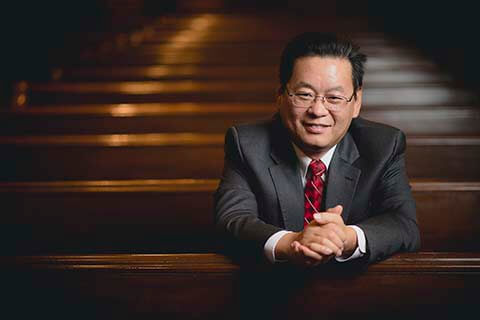November 16, 2016
Survey reports the social, cultural and spiritual life of college students from China
 Fenggang Yang
Download image
Fenggang Yang
Download image
WEST LAFAYETTE, Ind. — The number of students from China studying in American colleges and universities continues to grow, and a Purdue University sociologist took a closer look at the social, cultural and spiritual life of these students.
China has had the most international students studying in the United States since 2009, according to the Institute of International Education. Between 2010 and 2015, the number of Chinese students at American colleges and universities increased from 128,000 to more than 304,040. That is about a third of all international students studying in the United States.
“There have been some news reports about Chinese students’ luxurious consumerism or changing views of politics and religion, but it is difficult to know how typical are those views. The goal of this survey was to evaluate their experiences in American higher education based on a representative sample,” said Fenggang Yang, professor of sociology and director of the Center on Religion and Chinese Society.
At Purdue, there are more than 4,000 undergraduate and graduate students from China. Some 960 - about 23 percent - participated in the study.
Some of the key findings include:
* Most of the Chinese students reported believing in some supernatural being or force, but few reported being religious.
* Believing in Protestantism and Catholicism increased, while believing in Buddhism, Daoism and folk religion decreased. After studying in the United States, the number believing Catholic Christianity doubled, while the number believing in Protestant Christianity quadrupled.
* The majority of Chinese students were from wealthy families. About 80 percent of the respondents indicated that the financial pressures of living in the United States were moderate or low.
* About 26 percent reported their attitudes about the United States becoming more positive since coming to the country, and 29 percent indicated having a more negative attitude. More students, about 44 percent, developed a more positive attitude toward China since coming to the United States, and 17 percent reported having a more negative attitude.
* Chinese students drank less but smoked more than other college students. Less than 20 percent of the Chinese students drank once per month or more in the past semester. About 10 percent reported they smoked, compared to about 5 percent in the general college student population.
* A majority of Chinese students have shared living space with roommates of at least one other racial or ethnic group.
* About 15 percent reported they had been treated unfairly due to their race.
“These findings give us a better understanding about this growing segment of international students in the United States, and in the future, we would like to expand the study to look at different regions and different types of schools,” Yang said.
The report, funded by the John Templeton Foundation, is online.
The Center on Religion and Chinese Society has organized various summits in the United States and China for scholars to learn the best social scientific research methods while participating in empirical research projects on religion and Chinese society. Yang and the center have received more than $6 million from the John Templeton Foundation that has supported various training programs and research initiatives. In 2014, Yang received $3.5 million from the foundation to map the religious and spiritual landscape in China and study how religions have emerged and flourished in this transitional era. The mapping will look at religious concentrations related to geography, urbanization and economy, as well as pilgrimage trails and tourist destinations.
Writer: Amy Patterson Neubert, 765-494-9723, apatterson@purdue.edu
Source: Fenggang Yang, 765-494-2641, fyang@purdue.edu
Related websites:
Did You Know: Center on Religion and Chinese Society
Sociologist studies religion, faith in China

